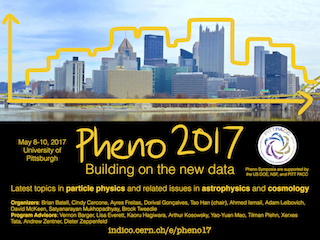Speaker
Description
The recent measurements of the Cosmic Microwave Background (CMB) from the Planck telescope, and of the Large Scale Structure (LSS) from different experiments, have confirmed the standard model of cosmology, or $\Lambda CDM$. Nevertheless, many alternative cosmological models are also consistent with this data. Some mild tensions between Planck, the measurement of the Hubble parameter ($H_0$), and these LSS experiments (concretely speaking, of the Matter Power Spectrum for sizes of $8h^{-1}$Mpc ($\sigma_8$)) hint to models beyond ΛCDM.
In this talk I present a recent proposal for a Dark Sector which consists of two components: a cold Dark Matter one, and another of Dark Radiation, along with their mutual interactions. The presence of the Dark Radiation alleviates the tension in the measurement of $H_0$, while the interactions address the discrepancy in $\sigma_8$.
I describe the mechanism with which this model deals with the mentioned tensions, using the equations for the evolution of the cosmological anisotropies, as well as examples of their particle physics realizations. In addition, I present simple analytical solutions for two interesting limits of this model. Finally, I show the fit of this model to the cosmological data and compare it to that of $\Lambda CDM$.
Summary
In this talk I present a recent proposal for a Dark Sector which consists of two components: a cold Dark Matter one, and another of Dark Radiation, along with their mutual interactions. This new model addresses some recent tensions in the measurements of the Hubble parameter and of the Large Scale Structure between Planck and a few other independent experiments.
